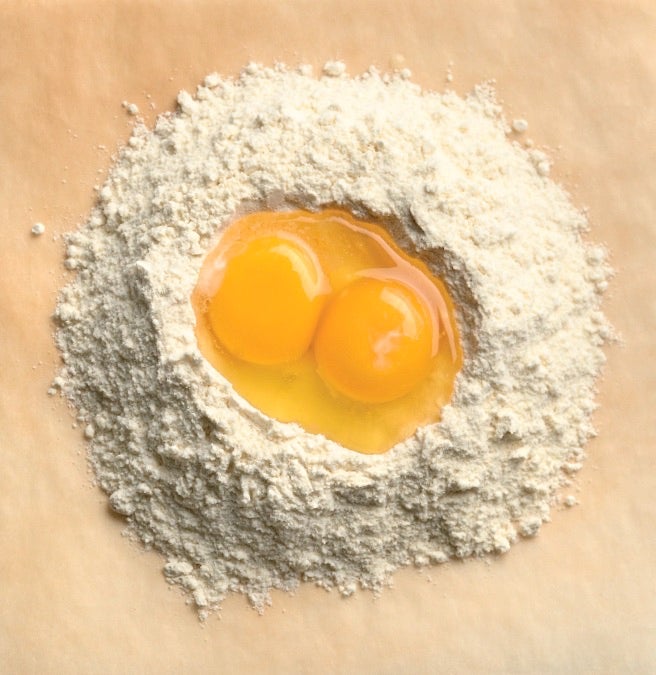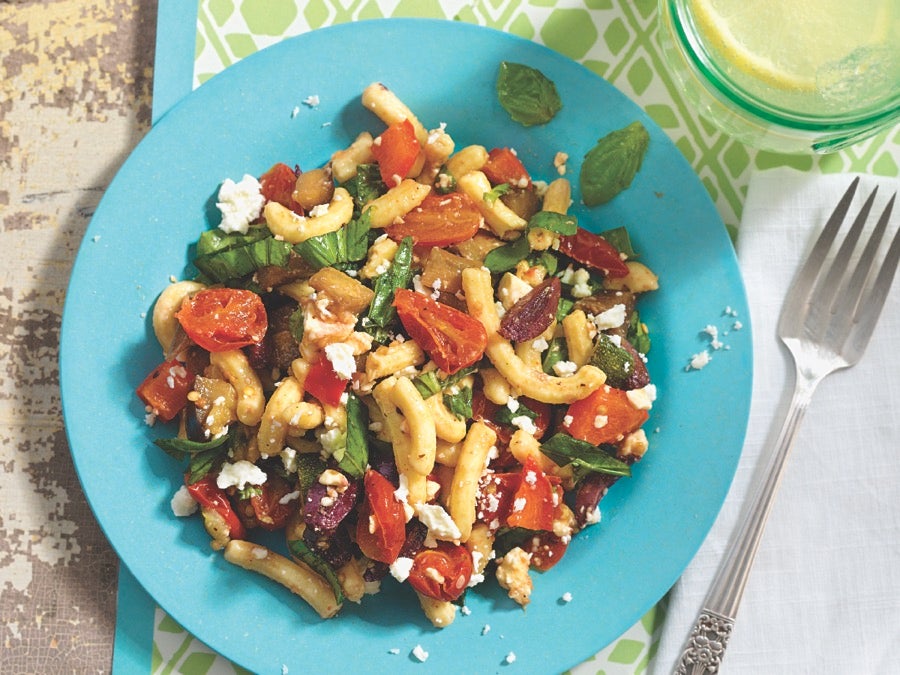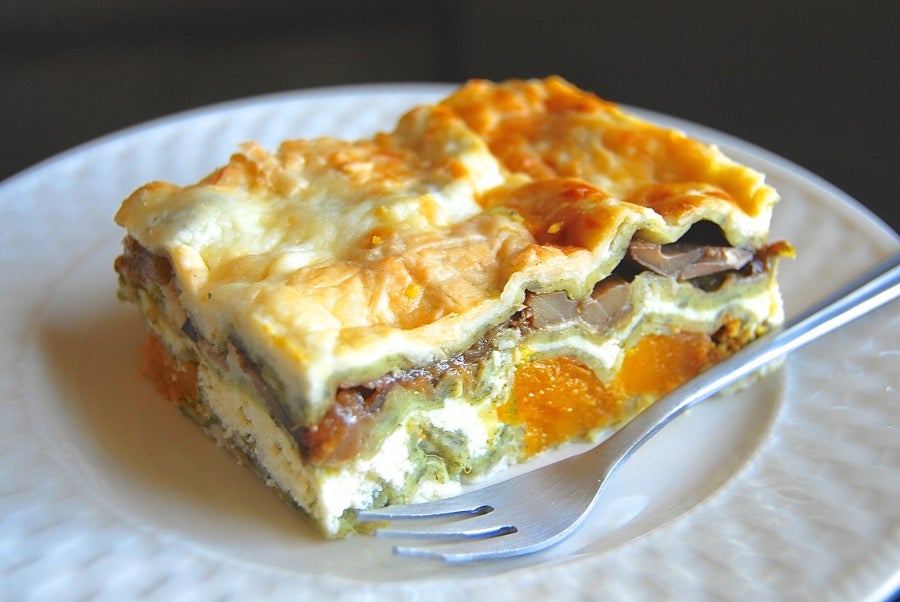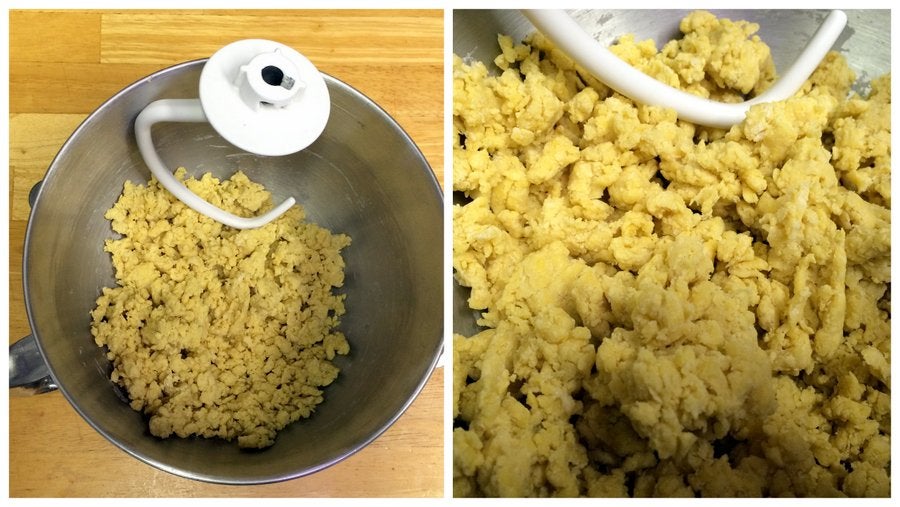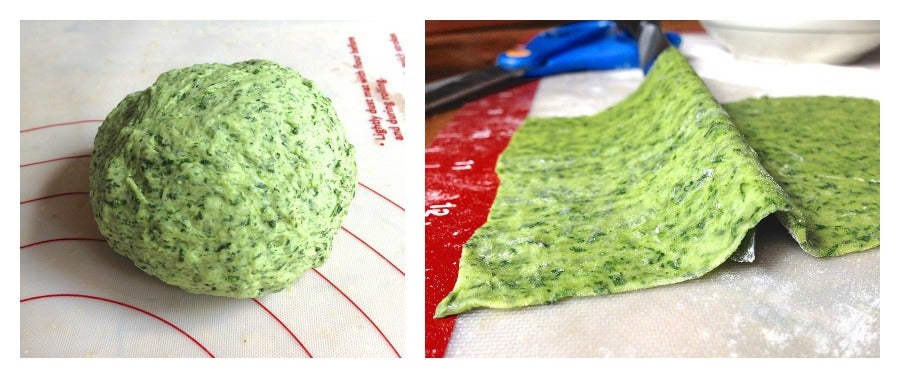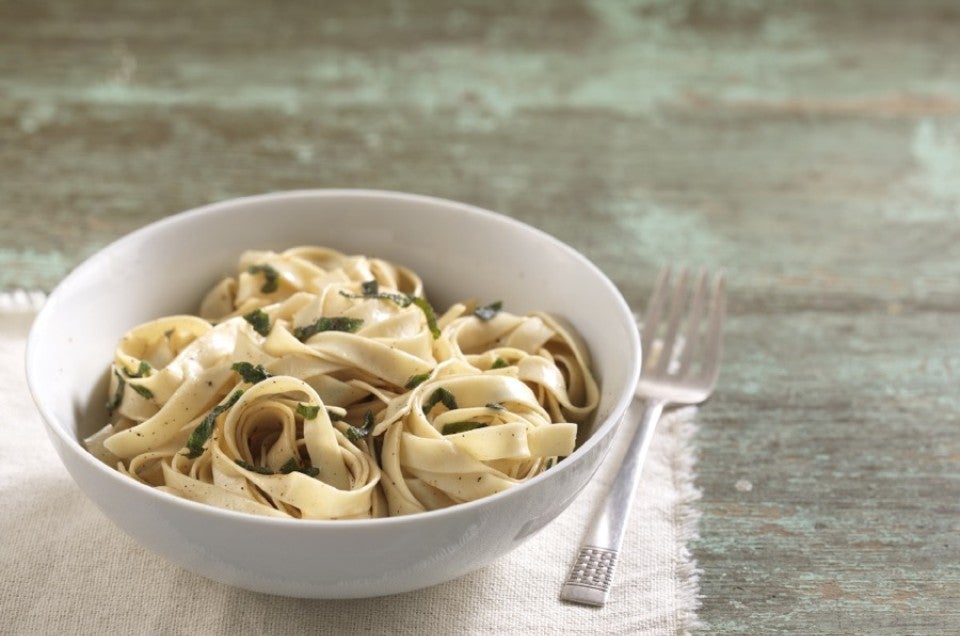


The last time homemade pasta was in vogue, I purchased both a hand-cranked machine, and an extruder attachment for my stand mixer. I played, I rolled, I boiled, and we ate. It was fun, but fairly labor intensive. And between work and family, my pasta-making days were sadly short-lived.
Once again, though, fresh homemade pasta is appearing on the food scene. And thankfully, making and storing your own supply of pasta is easier than ever.
Pull up a chair and join us as we share some basic homemade pasta tips.
Let's begin with a basic pasta recipe:
1 large egg per cup of flour used, plus 1 to 2 tablespoons of water as needed.
That's it, really. Egg, flour, and maybe water.
The flour could be all-purpose, whole wheat, semolina, our pasta flour blend, or a combination of these. Italian-style flour is best if you're making delicate sheet pasta, like for lasagna. Pastry and cake flours are too soft for homemade pasta.
Some recipes call for added salt, or for adding oil; but they aren't really necessary for basic pasta dough. You'll get plenty of saltiness when you cook the pasta in salted water, and the oil is best left as a topping rather than an ingredient.
The consistency of the dough will change, depending on the final shape desired. So decide ahead of time what type of pasta you'll be serving.
Tubes of some kind – ziti, penne, the macaroni used for macaroni salad – need a dough that's fairly dry, in order to pass through an extruder without sticking.
Make a softer pasta dough, one with added water, for pasta that'll be rolled into sheets. Once it's rolled, it can be left whole, to use for lasagna, manicotti, or ravioli; or cut into fettuccine. linguine, or other flat shapes. Lasagna is a good example of pasta that begins life as a softer dough.
Mix your dough by hand, with a mixer, or in a food processor. The key is to keep an eye on the consistency of the dough more than a clock or timer. When using a mixer, use the dough hook instead of the beater. There's less surface for the egg to cling to, incorporating it into the flour instead.
Pasta dough for use with extruders – think macaroni, ziti, and other hollow shapes – is a bit different than dough for pasta sheets. It's drier and doesn't form a ball as easily. Instead, it looks like pie dough or really lumpy grits. It'll readily hold together in a clump when squeezed, yet it's dry enough to cut cleanly.
Pasta dough that'll be rolled out needs to be softer. It should easily form a ball when squeezed; and just as easily go through the rollers of a pasta machine, yielding soft, smooth, silky sheets of dough, like this spinach pasta for lasagna.
Once you've made your pasta, toss it with some flour to prevent it sticking together. If you're cooking the pasta right away, it can go directly from the bowl into a pot of boiling water.
If you want to dry your homemade pasta for future use, spread it in a single layer on a large baking sheet. Leave the pasta uncovered in a dry area for 12 to 24 hours, gently stirring and turning it a few times. Flour is fickle, so humidity, temperature, size of the noodles, etc. will all play a part in the total time. A fan can be a big help ensuring your homemade pasta dries quickly and evenly.
When the pasta is completely dry (it should snap when you twist it, not bend), store it airtight at room temperature.
Avoid very humid days for making and drying homemade pasta. If you do decide to make pasta when it's humid out and drying conditions aren't optimum, either cook it fresh, or freeze it.
To freeze homemade pasta, place the baking sheet of cut pasta in the freezer for about 15 minutes, or until the individual pieces aren't sticking to each other or the pan.
Transfer the semi-frozen pasta to airtight bags. Label, date, and place in the freezer for up to 3 months.
Here you see two bags from my freezer. The darker pasta on the left is black pepper pasta made with dough that was a touch too dry. As it sat out and I moved it around to help it dry, the pasta started to break. Again, I'm not going to call it a loss per se. This pasta will go into soup or stew, where it doesn't play a starring role.
Look at these poor noodles! When they crowd the surface of the pot like this, all fat and flabby, they're probably overcooked.
Homemade pasta cooks much faster than commercially dried pasta. Here's a little breakdown on approximate times for cooking pasta in boiling, lightly salted water:
Be sure to have your sauce, toppings, salads, and sides ready at the table before you drop the pasta into the water. It'll cook up before you can say "Dinner time!" And cooked pasta waits for no one.
We hope you've found these tips helpful. Please share your favorite pasta tips and tricks in our comments below!


